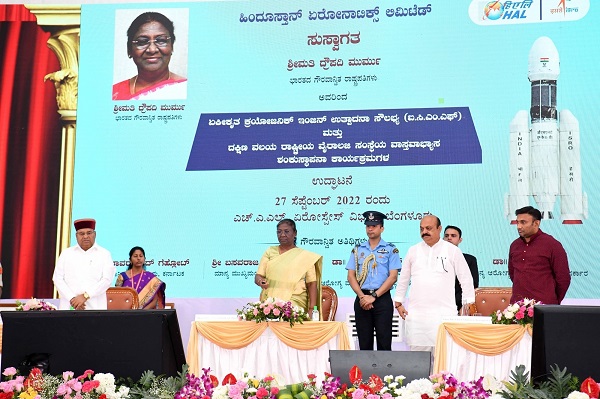
Bengaluru, (Asian independent) Inaugurating HAL’s Integrated Cryogenic Engine Manufacturing Facility (ICMF) on Tuesday, President Droupadi Murmu said it is not only a historic moment for HAL and ISRO, but for the whole of India.
“India is the sixth country in the world to have cryogenic engine manufacturing capabilities. The glorious past of HAL and ISRO gives us an assurance that they will play a crucial role in the future,” she said.
ICMF will cater to the entire rocket manufacturing and assembly under one roof for ISRO. The facility will boost self-reliance in manufacturing of high-thrust rocket engines.
The facility is set up in an area of 4,500 sq mt housing over 70 hi-tech equipment and testing facilities for manufacturing cryogenic (CE20) and semi-cryogenic engines (SE2000) of Indian space launch vehicles.
In 2013, an MOU was signed with ISRO for establishing the facility for manufacturing of cryogenic engine modules at HAL. The MOU for the cryogenic engine facility was subsequently amended in 2016 with an investment of Rs 208 crore towards setting up of Integrated Cryogenic Engine Manufacturing Facility (ICMF).
S. Somanath, Secretary, Department of Space, said India can emerge as a superpower in rocket technology only with the help of HAL, which has shown ability to absorb complicated space technology with perfection.
Cryogenic engines are the most widely used engines world over in space launch vehicles. Due to the complex nature of the cryogenic engine, till date only few countries — the US, France, Japan, China and Russia — have mastered the cryogenic technology.
On January 5, 2014 India successfully flew GSLV-D5 with a cryogenic engine (made by ISRO through private industries) and became the sixth country in developing cryogenic engines. Space exploration in the future is mostly dependent upon cryogenic technology.







